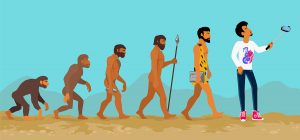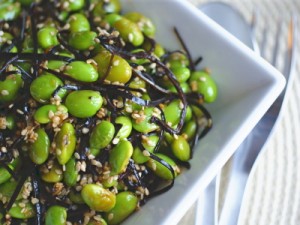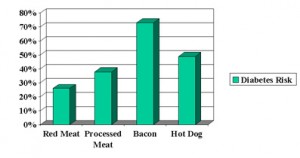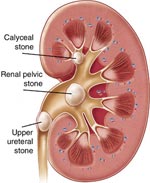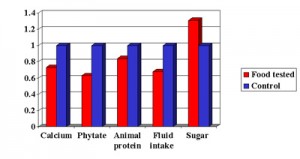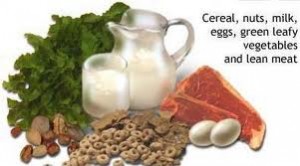A review article at CNN by a psychiatrist recommends that we live the life that we evolved for. Dr. Arash Javanbakht, an assistant professor of psychiatry at Wayne State University in Detroit, MI explains that man lived on this planet only since 200,000 years. But it takes about 1 million years for evolutionary changes to take place. As a result of this we tend to still behave in our lives the way we may have reacted 10,000 years ago. It is useful to think back of us being hunters and gatherers.
Anxiety, an ancient emotion
Anxiety, for instance, is an emotion that goes far back to 10,000 years ago when humans had to be part of the tribe. If an opposite tribe was fighting them chances were high that they could get killed. Even if your own tribe did no longer like you, there was a strong possibility that you were driven out or killed. This left us with an inheritance going back many millennia of anxiety. In modern life though it is the boss who does not like something you did. It could be a deadline for a school or college project that makes us anxious or some political news. The reasons have changed, but anxiety is still there!
Live the life that we evolved for: assess what we eat
Food was very scarce 10,000 years ago. When the tribe finally caught some prey, there was a feast where fatty food, meat, vegetables, fruit, nuts and seeds were eaten. Refined sugars were not available. You did not know when the next time would come where you had ample food. Today we still behave this way: we eat what we can and eat some more. The only problem is that there is no longer the pattern of famine orfeast. Instead there is easy access to the fridge with all kinds of food. We also have access to fast food places. And we drink sodas, eat candies and other sweets. Eventually we end up fat and fatigued.
Live the life that we evolved for: which way do we move?
Our ancestors had to run and walk many miles a day to find food. They may have been attacked by wild animals and had to flee. They also needed to chase a prey for food. Constant movement was the order of the day. What are we doing today? We did not evolve to step into a car and drive to work. We also did not evolve to sit at a desk from 9AM to 5PM. In the evening we sit in front of the TV or lie on a couch eating munchies and drinking beer.
Our modern life
It is no wonder that we gain weight, that our heart and lungs do not get conditioned, and that our muscles are a pile of mush. We need to think back what our bodies were built to do. Perhaps a long walk would be healthier than sitting all the time. Some of us do not mind to visit a gym daily and build an exercise routine into the day. This mimics the activities of the hunter/gatherers and is a lot better for our bodies.
Live the life that we evolved for: sleep problems
Many people today have problems to fall asleep. The sun had 100% control of the diurnal rhythm in the past. Now we have artificial lightning, blue light from TV’s, computer screens and iPhones. We are constantly getting stimulated. In addition, the stories we read or see on TV get us excited, so that the stress hormone, cortisol is released and melatonin, the sleeping hormone gets suppressed. Taken all this together, it is not really a wonder we have problems sleeping. Relaxation methods can help us to tone down before we go to sleep. You may want to meditate, do self-hypnosis, practice some yoga or just lie still and relax, clearing your mind, and more importantly switch the TV off and put the computer on “sleep”. Sleep for you comes easier this way.
Live the life that we evolved for: our fears
10,000 years ago fear was a normal part of our lives. There were predators you had to fear. There were tribal wars where you had to fight for your survival. You had to fear starvation. The fight/flight response was a reality. Compare this to our lives now. We may fear an exam, a meeting at work or agonize what to wear for a party. We have no real existential fears unless you live in a war zone. Many people may feel that they do not have enough fear in their lives, so they get drawn to horror and mystery stories, computer games, haunted houses etc. But this is fodder for anxiety!
Live the life that we evolved for: how to feel better
When we adopt a pet, let’s say a dog, we understand that it needs food, exercise, love and sleep. But when it comes to the human animal in us, we find it hard to understand that we need that too. In fact, we need to live the life that we evolved for. We need some form of exercise all the time, because that is what we were meant to do 10,000 years ago and our bodies are still built for that. When you walk the dog, you may make new friends or even a date. If you go to the gym, you realize that your muscles work better and begin to make your body fitter. You will also feel better about yourself. You appreciate that your mood is lifting, and you feel the increased energy and strength.
Dr. Arash Javanbakht said about the bottom line:
“If we treated our body the way responsible dog owners treated their dog, we would live a much happier life.”
Conclusion
It takes people 1 million years for evolutionary changes. We do not change our behavior fast. Dr. Arash Javanbakht, an assistant professor of psychiatry at Wayne State University in Detroit, MI compared our lives now with the lives of the hunters/gatherers in the past. People ate fatty food, meat, vegetables, fruit, nuts and seeds when a prey was hunted. But then there was an episode of fasting. People then had to walk and run all day long to catch some food again or they had to run to escape from a predator. Nowadays we use cars for transportation, use the elevator to get upstairs and walk from the table at home to the TV set. If we do not move enough and we eat the wrong foods, we do not turn fit but we turn fat.
Our modern lives
We also use LED lights from TV’s, computers, iPhones and tablets that interfere with our diurnal hormone rhythm. It is not about going back to sending smoke signals, but it is all about setting limits and when to stop and disengage from social media and the phone. Not setting limits is part of why we have problems to sleep. Stress can also be a factor of insomnia. Dr. Javanbakht says that we need to relearn how our bodies were built. We need proper nutrition without high-energy carbs. In addition we need regular exercise that will help us to relax and feel more energy. Anxieties will lift and we will feel better about ourselves.
